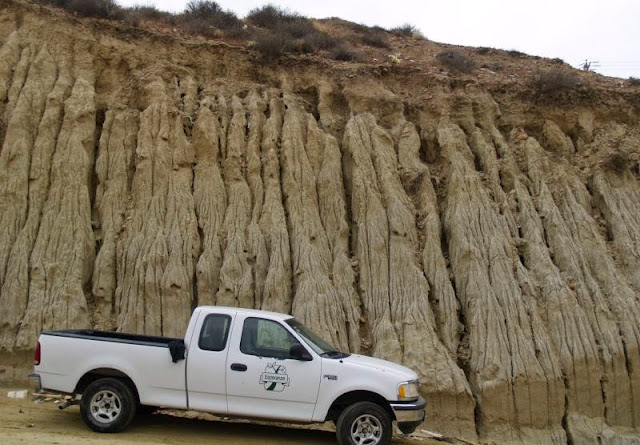 |
Wilson checks out the strange cinder blocks. Like many of you readers, the indestructible has never seen blocks like these before. |
On Thursday I introduced Wilson to the Haener construction block. something many of you readers may remember from a year ago when I blogged about building a home for a poor family in Tijuana. (For that story, allow me to direct you to http://tjposada.blogspot.com/2014/05/the-mighty-haener.html.)
The company which markets this block calls it the "mortarless interlocking system." Their Web site adds:
Stacked without Mortar, Haener Block can be laid up to 10 times faster than conventional block by skilled, semi-skilled or unskilled laborers. Self-aligning and uniform, Haener Block structures look professional and aesthetic the first time, every time!Oh, I should mention that last year I misspelled Haener. Well, it's spelled right this year--I think.
It's unclear to me what the rights of duplicating this technology are. As it was explained to me Thursday, families create these blocks and then Esperanza uses them when it comes time for volunteers to build the new home.
 |
This bank gives an idea of the environment where we were making the blocks. You don't buy them at the store, you make them on site. |
 |
A bird's eye view of the manufacturing site: sand pile to one side, cement bags, the mixer, and the cinder block machine. Start the presses! |
 |
Alex Cratsenberg grabs some pallets for the press. |
 |
Wilson watched some women folk drag sand into buckets that wait, like little birds, with their mouths agape. |
 |
Presto! Dos Haeneres (two Haeners). This provides a clear view of how the blocks interlock with blocks that are rested on top of them. Rebar lies in the grooves to further lock them together. |
 |
Ooooops! See what I mean? One bump and the blocks can crumble at this stage. But then you just drop the broken pieces back into the press and try again. |
 |
Some of the sand had rocks in it, so one enterprising worker,Tonyia Cairns, scrounged out a piece of screen and they shoveled the sand into the bucket through the screen. |
 |
Occasionally the mixer needs to be cleared out. |
 |
Klaus Schweintek relies on his hammer to persuade caked-up mix to let go. |
I promised to tell you about some of the other technologies. Here's one of them -- the shoe that keeps on growing is pictured below. Now I'm not going to spoon feed you on this one -- Google "the shoe that grows" and find out how this simple technology is changing the lives of third world children.
Other simple and game-changing technologies I've come in contact with:
- Break-open flouride kits that can be used on young mouths; you use the kit and discard it and it's good for about six months. I flourided a whole bunch of mouths four years ago using this technology in Peru. This story and two others immediately below is told in my 2011 blog, incadiaries.blogspot.com.
- Smokeless wood stoves that replace open hearths that women use the world over to cook indoors. The stoves are designed to carry all the smoke out of the home. Google the clean cook strove project. These stoves are easily repaired and use no expensive parts.
- Ceramic water filters, which I helped make in Peru. They remove 99.9 percent of pathogens by simply allowing water to drain through a special ceramic pot made of clay, sawdust and water.
- The One World Futbol -- a virtually indestructible ball that never needs replacing, and brings play to children all over the world in the world's most popular sport --soccer. You already know about that--that's what Wilson is all about.
The point of this is that there are simple ideas that are making strategic changes for the better in people's lives. These products demonstrate that there are solutions that don't require big expenditures, and which are sustainable. We are gaining increasing ability to deliver strategically useful and sustainable technology to ordinary people in the third world.
We can do this!
Since my mouse has died, it's going to be very difficult to deliver more commentary and photos until I'm home in a couple days. There's more to tell, and I hope you're interested. And thanks for coming along.
Love,
Robert, and
Wilson







No comments:
Post a Comment